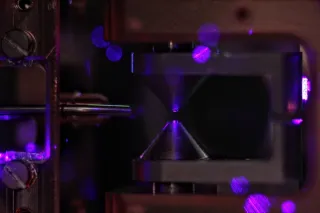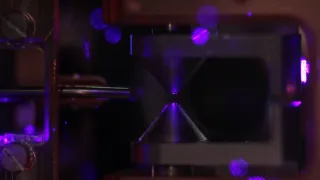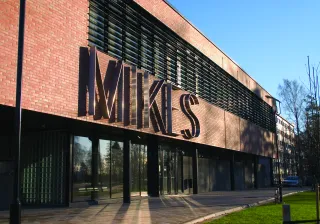The metrology institute VTT MIKES has made progress in its work to develop a next-generation optical atomic clock. The first optical clock in the Nordic countries has been proven to work during trial use, and its measuring accuracy is continuously improved. The goal is that VTT MIKES could use the clock to participate in maintaining universal time and in defining the SI second increasingly accurately.
The world is facing a growing need for accurate time in, for example, 5G telecommunications networks, digital power grids and digital trade, such as rapid stock exchange trading. In addition, accurate time is utilised in many fields from basic physics to land surveying and from satellite navigation to radio astronomy.
The accurate measurement of time is based on atomic clocks, and Finland’s official time, for instance, is maintained by means of commercial atomic clocks. Conventionally, atomic clocks have measured time by producing microwaves tuned to transition between different energy levels in atoms. The next-generation optical atomic clocks, on the other hand, measure time by producing light at a specified frequency. By using light, time can be measured ten to a hundred times more accurately than with commercial atomic clocks. The frequency of a commercial atomic clock is typically equal to the SI second by 14 decimal places, that is, it gains or loses one nanosecond per day. The accuracy of VTT MIKES optical atomic clock is already 17 decimal places, 1,000 times better, and it can be used to calibrate continuously running commercial atomic clocks.
VTT MIKES could measure a second to 18 decimal places
VTT MIKES has been developing an optical clock based on a laser-cooled ion for nearly ten years. According to VTT MIKES’s cautious estimate, the measuring accuracy could reach 18 decimal places in 2030. According to the roadmap prepared by the International Bureau of Weights and Measures (BIPM), the definition of the SI second will be revised from the current caesium atom’s microwave transition and will be based on an optical transition—perhaps in the 2030s. In the future, VTT will also participate in redefining the SI second with the new clock.
“Dozens of similar optical clocks are being developed in the world, but only seven optical clocks (France, Japan, the USA, South Korea, Italy) have so far been officially involved in maintaining universal time. Our optimistic view is that our clock will be among the ten most accurate clocks in the world. Our goal is to participate in maintaining universal time together with other optical atomic clocks within the next few years,” says Senior Scientist Anders Wallin from VTT MIKES.
Frequency comparisons will also become more accurate
VTT MIKES’s optical atomic clock participated in the first international frequency comparison in spring 2022, the results of which will soon be published. The goal of the research in the next few years is to further improve accuracy and automate the clock’s operation so that it can run for weeks or months without maintenance.
When two optical clocks are compared through a global navigation satellite system (such as GPS, Galileo), the uncertainty of the measurement result often strongly depends on the uncertainty of the comparison method. For this reason, frequency comparisons in which a portable optical atomic clock will visit VTT MIKES are planned over a period of a few years. This makes it easier to compare the clocks, and only the optical clocks themselves affect the measurement result.
For the same reason, an increasing amount of time and frequency is distributed from atomic clocks to users by using optical fibres instead of satellite systems. For the time being, VTT MIKES’s optical atomic clock is the only one in the Nordic countries, but, in the future, optical fibre connections to other optical atomic clocks that are geographically close will enable more accurate comparisons.
Accurate time is needed – using an optical clock to be self-sufficient in time
Accurate measurement of time is needed to maintain the critical infrastructure and key functions of society. It is important for, for instance, the operation of 5G networks and digitalised power grids as well as for the electronic trade of securities. A solution based on satellite navigation, such as a car navigation system or a sports watch, is an example of an application that uses accurate time continuously. Radio waves move from satellites to users at the speed of light, approximately 30 cm per nanosecond. In order for navigation to succeed with the accuracy of a few metres, time delays from satellites to the user must be measured with an accuracy of a few nanoseconds.
Ensuring accurate time should be made possible under all circumstances. The time produced by the current commercial atomic clocks is measured and modelled on the basis of a GPS comparison, but satellite systems may experience interference that prevents the signal from being received. The time produced by an optical atomic clock does not require verification based on a GPS comparison, so the time can be accurately measured with the optical clock even during any interference. The self-sufficiency in time achieved in this manner can safeguard the functions of society in different circumstances and improve security of supply.






